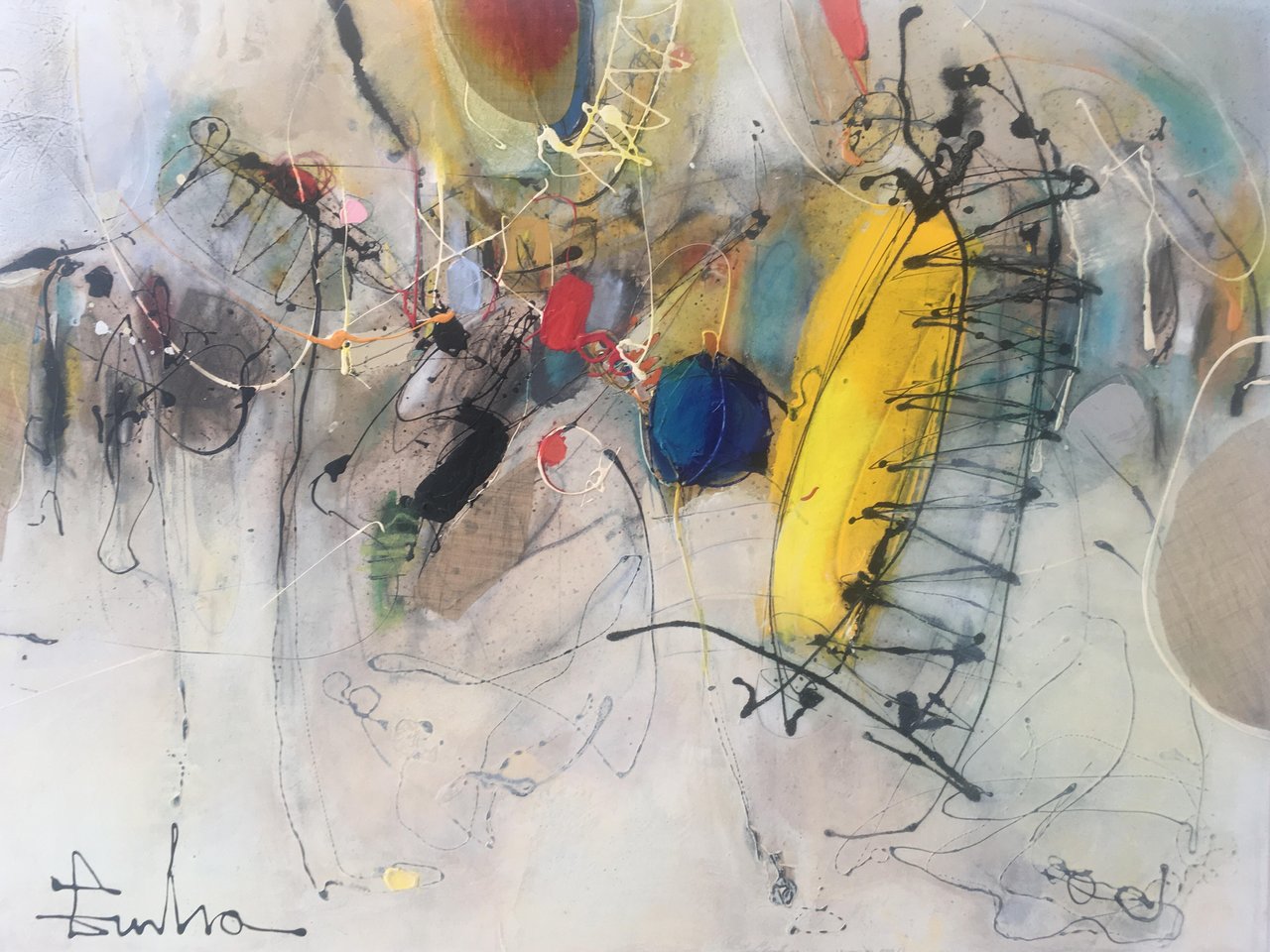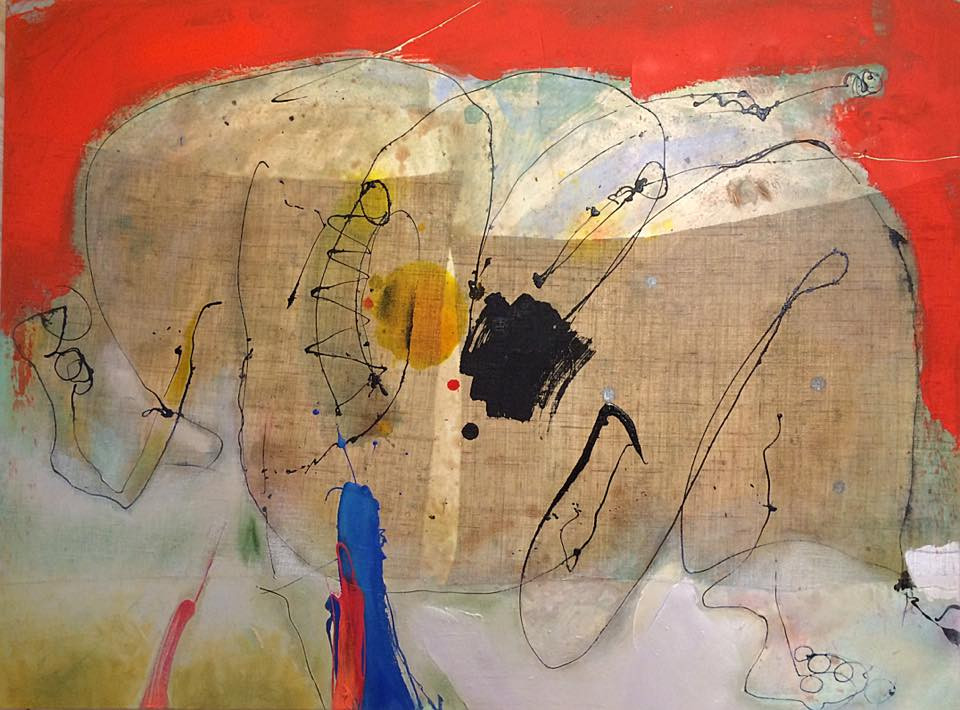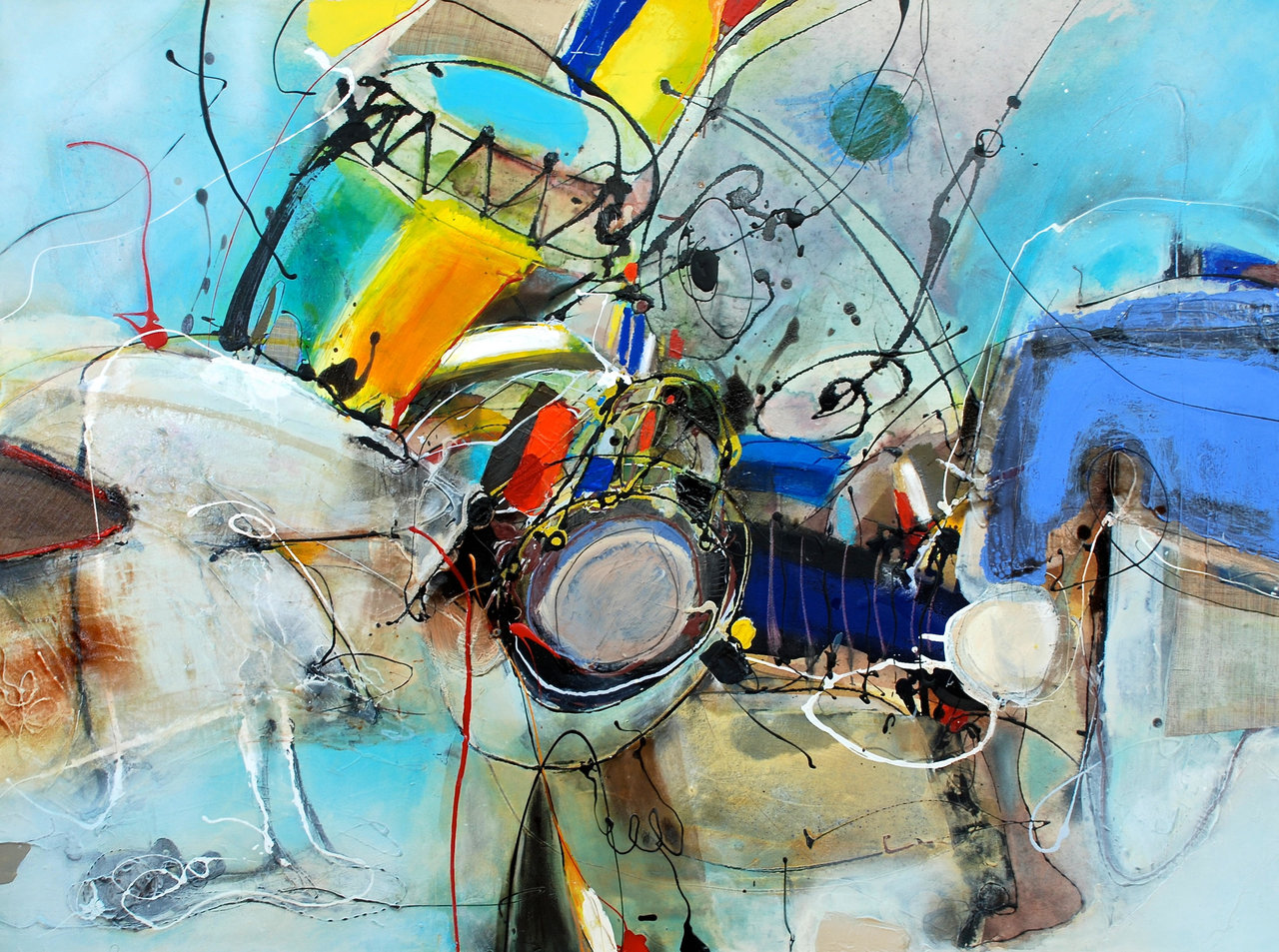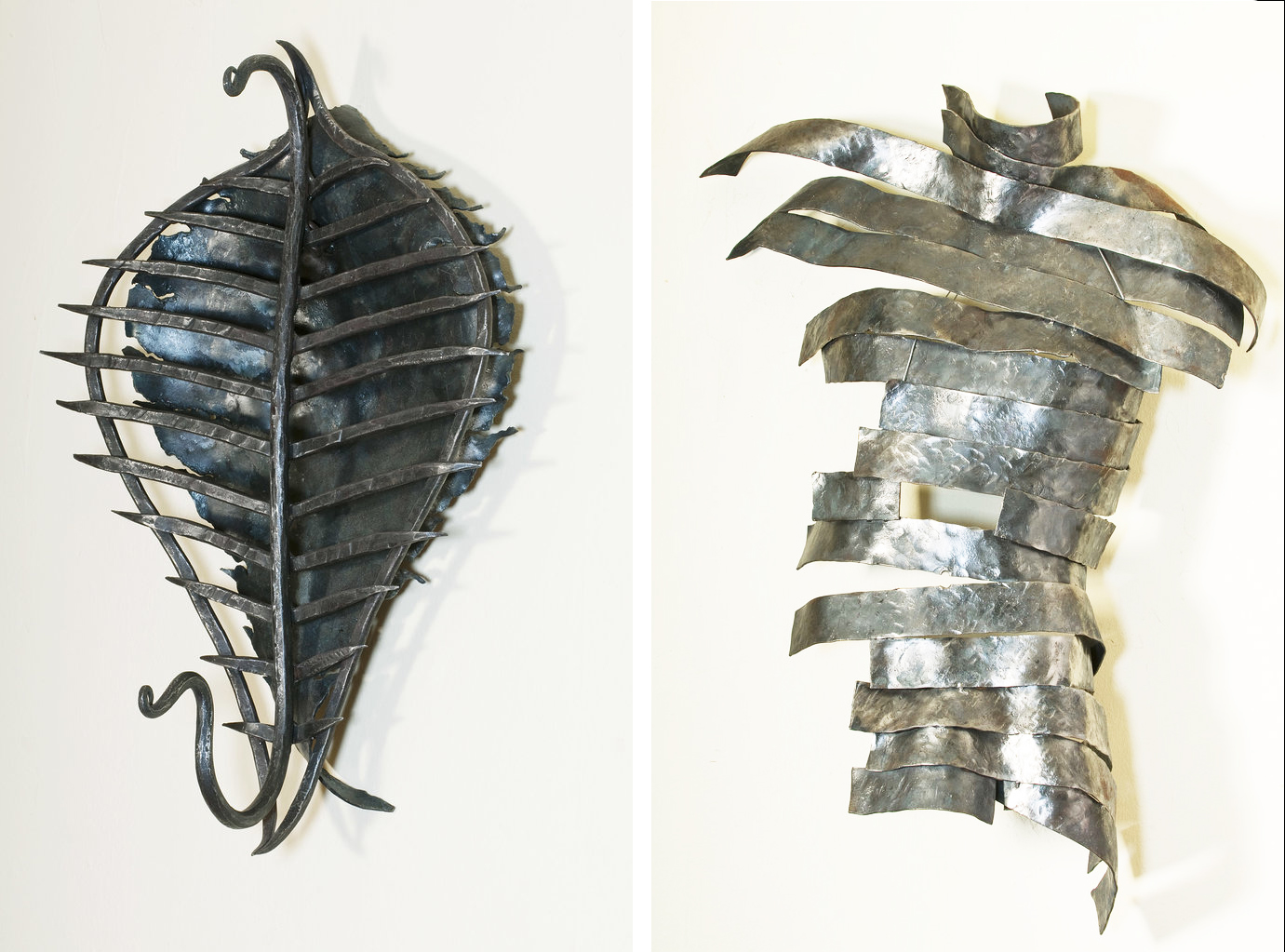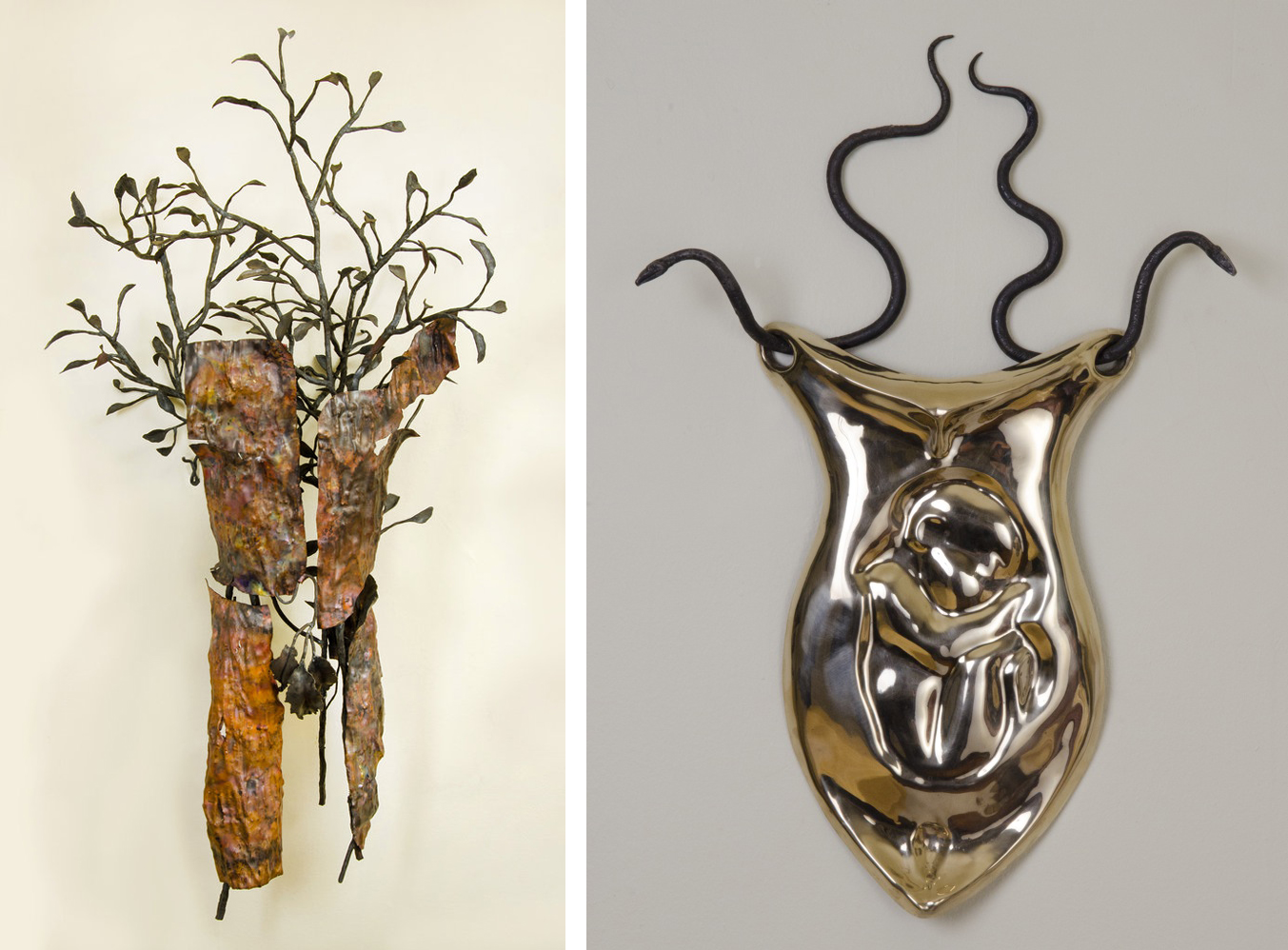The Toronto based Korean artist Eunha Kim has left her original country at a very young age. She lived on her own as an international student since high school. She said that the time she spent studying in London was very lonely and she was very homesick. One day, when she visited a farm on her trip back in Korea, she watched the traditional dancing ceremony called Nong-Ak, a form of folk dance, a rural ritual, which often performed by the farmers to celebrate their harvest after a year-long of hard work. She was instantly touched by the raw energy of the dancers. The movements, music, and customs have greatly inspired her. The accidental discovery of Nong-Ak brought her happiness, and it reminded her that life can be enjoyable. Upon returning to London, she started recreating these moments of joy in her artwork. She dripped paint freely on canvas in order to mirror the motions of dance; the head spans in particular. She used Korean traditional colors to portray the sound of music and motions. Her works are expressive and full of energy.
Eunha Kim, Cheerful, mixed media, 40” x 30″
Kim said at the opening reception, that in this exhibition “Happiness” is her favorite work. One interesting element of this painting is the attached brown fabric, a traditional Korean fabric that is used to dress deceased people. When asked for the reason behind this, Kim said, “We should remind ourselves that everyone’s final destination is death, so we should live our life with joy, and then leave it with happiness.”
Eunha Kim, Happiness, mixed media, 40” x 30”
Kim’s work can be easily misinterpreted as any abstract painting. However, it is not hard to find Korean elements in the details. In “Syncopated Motions” one can easily identify the drums, ribbon-hats and the choice of traditional Korean colors. She combines these symbolic elements with her unique way of depicting the motions and movements of Nong-AK on her canvases, in order to share her wonderful experience with the viewers.
Eunha Kim, Syncopated Motions, mixed media, 40” x 30”
Kristen Fahrig’s sculptures compliment, yet, at the same time juxtapose Kim’s joyful images. Unfortunately, no one could talk to Fahrig at the opening reception as she past away in November, 2017. She left far too early, and in her the Queen West community lost an activist, an artist who cared about people, education and made sure that their environment didn’t miss the artistic touch, as she filled playgrounds and squares with her sculptures and projects.
Her posthumous exhibition, Body Imprints, is symbolic in many ways. The metal sculptures depict the bare minimum of the human body: a skeletal part or a simple outline. “Backbone Shield” with its steel spikes represent a strong armor and the bones that it might support; combining functional metal work with the human body. Some other works are even more stylized, “Dis-armed” reminds us of muscles and sinews “hugging” and supporting the body while “Filigree Torso” focuses on the decorative beauty of it.
Kristen Fahrig, Backbone Shield, 2007, forged steel, 21.5” x 14.5” x 10” (left) & Dis-armed, 2008, forged steel, 39” x 25” x 12” (right)
All the sculptures are non-figurative. As Fahrig wrote, they are “about the skin, the shell that surrounds the body. It’s also about the imprints that the body makes, for example in sand or in long grass. The body is the negative space into which we can project ourselves and feel our connection with the earth.” Her latest work, “Bark Man” depicts a fractural human form entwined with a growing tree, crating a poetic symbiosis, as the two different life-forms live together in harmony.
Kristen Fahrig, Bark Man, 2017, forged copper and steel, 64” x 33” x 24” (left) & Liquid Life, 2012, hand cast bronze and forged steel, 29” x 19.5” x 3.5” (right)
However different are the artworks of Kim and Fahrig, they share the most important thing on Earth: the love of life.
Summer Sun
Images are courtesy of loop Gallery
*Exhibition information: Eunha Kim, Joy of life & Kristen Fahrig, Body Imprints, February 3 – 25, 2018, loop gallery, 1273 Dundas Street West, Toronto, (three doors west of Dovercourt). Gallery hours: Wed – Sat 12 – 5, Sun 1 – 4 p.m.

